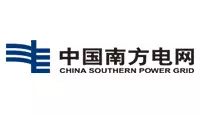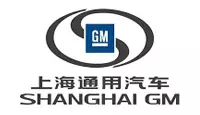Shanghai, China
+86-17317656853
inquiry@cgprotection.com



As the global energy structure rapidly shifts toward low-carbon and renewable energy, new power systems such as solar, wind, energy storage, and electric transportation are developing at an unprecedented pace. While energy transition drives green development, it also brings unprecedented electrical safety challenges.
Traditional power systems are dominated by large-scale centralized generation, with mature electrical safety management and controllable risks. In contrast, renewable energy scenarios feature distributed generation, variable-frequency control, high-power energy storage, and high-voltage DC systems, increasing the risk of arc flash, short circuits, and electric shocks.
Complex voltage levels: coexistence of high-voltage DC (1,500V, 3,000V) and AC (25kV and above)
High power density: concentrated energy in battery cabinets, solar inverters, and high-voltage electrical panels
Varied working environments: wind turbine towers, solar racks, rooftop storage boxes restrict operational space
Highly automated systems: faults propagate quickly, increasing potential arc energy
Increased Arc Flash Risk
Miniaturized and high-density equipment in renewable systems makes local short circuits or operator errors likely to cause arc flashes, releasing high temperatures, shock waves, and molten metal in milliseconds, posing serious hazards to personnel and equipment.
High-Voltage DC Protection Complexity
Traditional AC protection experience cannot fully apply to high-voltage DC. DC arcs have longer duration, are harder to extinguish, and increase the risk of electric shock and arc burns.
Need for Multi-Point Monitoring and Remote Operation
Distributed renewable equipment makes manual inspection risky, requiring high-standard PPE (personal protective equipment), infrared thermography, partial discharge detection, and remote monitoring solutions.
Complex Environmental Factors
Wind and solar equipment are often exposed to high altitudes, strong winds, and rain or snow, increasing operational uncertainty and the probability of sudden accidents.
Conduct arc energy assessment for different voltage levels and equipment types
Establish standardized work procedures, including power isolation, tool management, and work permits
Prepare emergency response plans and designate isolation zones to ensure controllable incidents
In renewable energy scenarios, arc flash clothing, arc-resistant gloves, and hoods/face shields are essential.
Match arc protection level to risk: 8–40 cal/cm² for low-voltage DC in storage and PV, 40–65 cal/cm² for high-voltage wind and large-scale storage
Modular design: hood, face shield, and gloves can be detached and combined for different tasks
Lightweight, flexible, durable: suitable for outdoor, high-altitude, and confined-space operations
Deploy remote monitoring and intelligent alarms to detect partial discharges or abnormal temperature rises in advance
Digitally manage PPE usage, cleaning, and lifespan to ensure worker safety
Regular training and drills enhance on-site emergency response capability
| Scenario | Risk Characteristics | Protection Requirements |
|---|---|---|
| Solar Power Plants | Rooftop high-voltage DC combiner boxes, inverters | Arc flash clothing + face shield + insulated gloves + safety shoes |
| Energy Storage Systems | Battery cabinet maintenance, discharge testing | High-level arc flash clothing, full protective set |
| Wind Turbine Towers | High-voltage inverters, control cabinets | Lightweight, durable arc flash clothing + fall protection |
| EV Charging Facilities | High-voltage DC fast-charging cabinets | Modular arc flash clothing + gloves + insulated shoes |
Energy transition provides new momentum for low-carbon development but also raises higher electrical safety requirements.
Scientific risk assessment, standardized operational procedures, and high-level arc flash PPE are key to ensuring the safety of renewable energy operators.
As distributed energy, energy storage, and smart grids continue to develop, electrical safety and protection technologies will become increasingly critical.
“Protection First, Safety Foremost” – in the context of energy transition, safeguarding the life of every power worker is paramount.
Tags:
Shanghai C&G's personal protective clothing and PPE products are trusted by customers in the world. Our products are exported worldwide, with a strong presence in the United States, China, Japan, Germany, the United Kingdom, India, France, Italy, Brazil, and Canada. In addition, we have a significant customer base in other countries across each continent, including Australia, New Zealand, South Africa, Nigeria, and Egypt in Africa; Argentina, Chile, and Mexico in South America; Russia, South Korea, and Indonesia in Asia; Spain, Poland, and Turkey in Europe; and Saudi Arabia and the United Arab Emirates in the Middle East. Wherever you are in the world, we have the products you need to stay safe and protected. Contact us today to learn more about our products and how we can help you meet your safety needs.










© 2023 Shanghai C&G. All Rights Reserved.